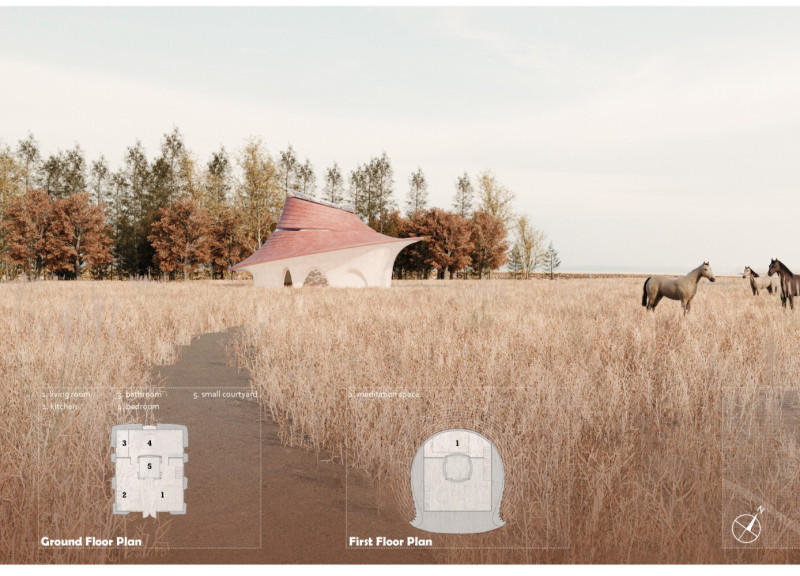5 key facts about this project
The overall concept hinges on the integration of natural elements with built structures, creating a harmonious relationship that enhances the surrounding landscape. This is particularly evident in the choice of materials and layout, which aim to minimize the ecological footprint while maximizing comfort and functionality. A carefully selected palette of sustainable materials is employed throughout the project, including recycled concrete, engineered wood, and low-emission glass. These materials not only contribute to the structural integrity of the design but also align with modern sustainability practices, fostering an environment that is both inviting and environmentally responsible.
Functionality is a central theme within the architecture of this project. Spaces are designed with adaptability in mind, accommodating various uses over time without significant modifications. Open floor plans exemplify this principle, allowing for flexible arrangements that can evolve with the community’s needs. The integration of multipurpose areas underscores a commitment to creating a dynamic habitat, promoting social connectivity and accessibility among all user demographics.
The architectural design incorporates large windows and strategically placed openings, optimizing natural light and enhancing the ambiance within. These design choices not only provide energy efficiency but also offer stunning views of the surrounding landscape, making the environment an integral aspect of the indoor experience. Attention to sound management and thermal comfort further enhances the livability of the spaces, demonstrating a comprehensive understanding of user well-being.
Unique in its approach, this project integrates contemporary architectural ideas with time-honored principles of design. The interplay of open and enclosed spaces generates a dialogue between privacy and community interaction. The exterior features elements such as green roofs and living walls, which serve as both aesthetic enhancements and functional components, contributing to biodiversity and energy efficiency. This thoughtful incorporation of nature is a testament to the design team’s commitment to sustainability and ecological consciousness.
In terms of architectural detail, the project showcases a variety of textures and finishes that enrich the sensory experience. The façade employs a mix of horizontal and vertical elements, creating depth and visual interest while maintaining coherence in overall form. This focused attention to detail reflects a high level of craftsmanship and an understanding of the local context.
The project ultimately represents a synthesis of innovative design and practical implementation, emphasizing the importance of community alongside individual experience. The careful consideration of site dynamics, materials, and user-oriented spaces culminates in a holistic architectural expression that responds effectively to its surroundings. Readers interested in understanding the deeper intricacies of this work are encouraged to explore the architectural plans, sections, and ideas presented, which provide substantial insight into the project’s thoughtful execution and design philosophy. Such exploration will reveal how the architecture not only serves its immediate functional role but also engages with the broader narrative of its location and community.























